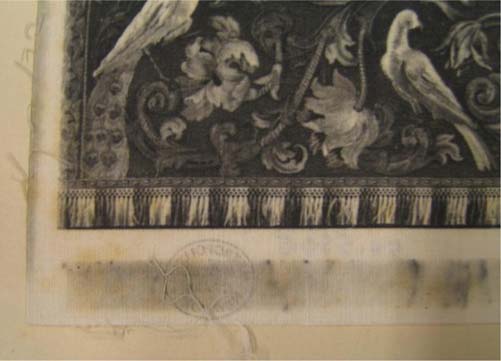
Topics in Photographic Preservation 2007, Volume 12, Article 2 (pp. 3-14)
Presented at the PMG session of the 2006 AIC Annual Meeting in Providence, Rhode Island
In 2005, The Metropolitan Museum of Art acquired the Gilman Paper Company Collection, a group of 8,500 photographs assembled from the late 1970's until 1998 by Howard Gilman and his curator Pierre Apraxine. Generally considered to be the most important collection remaining in private hands, the Gilman Collection contains the work of early masters such as Talbot and Watkins as well as work by great early twentieth-century photographers including Steichen, Rodchenko, and Man Ray.
After this momentous acquisition, the conservators and curators of the Department of Photographs met to organize a strategy for processing the incoming works. At the time, the curators asked the Conservation Section to revisit the idea of putting a permanent ownership stamp on the verso of each photograph. The curators felt that the marks served an important security function. As conservators, we disliked the idea of making any permanent change to these masterworks of photography. We were concerned that the stamps might interfere with subsequent conservation treatment, and we worried about inadvertent damage in the form of ink migration or transfer to adjacent images (see figures 1 and 2).

Fig. 1. Stamp on verso visible on recto. Frederick H. Evans, [Needlework Altar Cloth, Durham], Acc. No. 54.550.5.
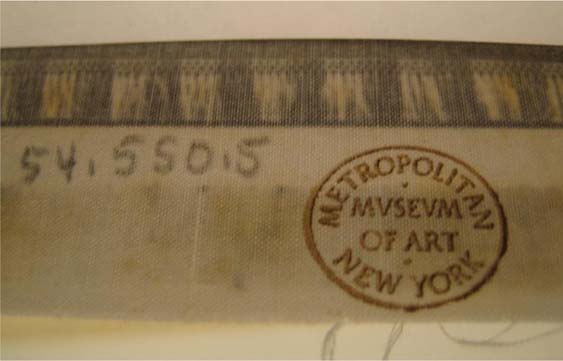
Fig. 2. Verso. Frederick H. Evans, [Needlework Altar Cloth, Durham], Acc. No. 54.550.5.
With the encouragement of the curators, the authors devised a quick evaluation of permanent marks. In October and November of 2005, a variety of marking media used historically at the Metropolitan Museum were tested on six types of photographic supports commonly found in the collections. The verso surface of these supports were marked with graphite and stamped with various inks - and the marks were then subjected to vinyl erasers and mechanical action, as well as treatment with deionized water and ethanol. The results of this quick study demonstrated that it is possible to essentially obliterate ink stamps on some supports. The curators agreed that the theoretical benefit of stamping did not outweigh the risks. The current practice in the Museum is to mark the verso of the photograph with the accession number in graphite. In addition, specifically for the Gilman collection, a digital image of the reverse after the accession number has been recorded is included in The Museum System or tms record, the computerized cataloging system used at the Metropolitan Museum.
At this point a more methodical investigation was undertaken to learn about the impact of stamps on photographs. This was motivated in part by the fact that some but not all photographs in the collection have ink stamps, but there had never been a study to learn about the solubility of various inks used and possible surface changes during treatment on the different substrates. The experimental design, the ink used, the sample types, as well as our preliminary observations of this ongoing investigation are described below.
Paper-based materials have historically been marked with indelible ink signatures or collectors marks as a way to establish ownership and provenance. While it is in no way the purpose of this paper to present a comprehensive overview of the practice, we did find a reference to the seventeenth-century collector Pierre Mariette, who “was accustomed, whenever he happened to become possessed of an impression of more than ordinary beauty, to write his name at full length, and a date, on the face of the print; and although this is certainly a disfigurement, yet such is Pierre Mariette's reputation for judgment that to be thus disfigured is no disparagement to a print, but the contrary” (Maberly 1880, 83–84). This author sums up rather neatly the inherent tension between the two points of view.
There are those who feel that stamps may act as a deterrent to theft and as an aid in the recovery of stolen art. Of course, stamps do not necessarily prove ownership, as they may be forged, and it is always possible that a mark may be removed or altered, possibly damaging the artwork in the process. Even a graphite inscription, while easily reduced, leaves traces of graphite and compressed and broken fibers behind that can be of assistance in tracing a work's origins. Greater attention is needed to reduce an ink stamp, but certainly our tests confirmed that on a fiber-based photographic support, the stamps can be removed with few clues left to their onetime existence.
While stamping works on paper was at one time a customary practice at The Metropolitan Museum of Art as in many public and private collections, the history of its use there is not well documented, and there is no indication that conservators were ever consulted until recently (see figure 3).
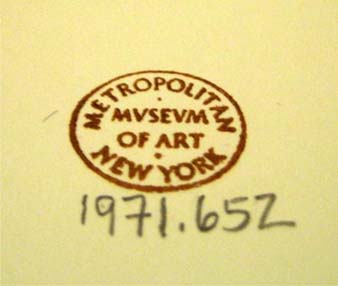
Fig. 3. Stamp on verso. Hans Namuth, [Robert Rauschenberg Holding Film for Metropolitan Museum's Centennial Certificate], Acc. No. 1971.652.
In our work, we relied on anecdotal evidence from curatorial colleagues, as well as materials found in the Department of Photographs' semi-official “stamping box”.
The purpose of our investigation was to learn more about the behavior of inks that have been used historically, as well as to evaluate inks that are currently available. We tested four inks, on ten supports, and subjected them to eight different treatments. The solubility and physical reduction tests were timed at intervals over a thirteen-week period to take into account the freshness of the application. The solubility tests were directed primarily at the effects of possible aqueous or solvent-based treatments on stamped works. The feasibility of mechanical and solvent-based reduction of the stamps sought to better understand the stamping phenomenon as a security measure.
The inks we chose were one red and one black proprietary ink that had been used at the Metropolitan at one point or another in the past. In addition, Phillips Process Company Actinic Ink no. 125, and Library of Congress ink, formula 7386, were chosen, both of which were obtained in 2005 expressly for this project.
Once the inks were selected, ten print supports were chosen on which to test them, using four samples of each paper type. Supports included both paper and plastic-coated papers used in conventional and digital imaging. The initial selections were straightforward: albumen prints, two different gelatin developed-out papers, chromogenic prints, and a silver dye bleach paper. The older process types were represented by discarded art reproductions and movie stills. The latter could be roughly dated by the movie represented. Earlier (1930's-1940's) and later (1950's) gelatin developed-out papers were selected to offer examples with and without optical brightening agents (obas). The presence of obas was verified with observation of the prints using ultraviolet (uv) illumination. The chromogenic and silver dye bleach were donated by individuals interested in the outcome of the study.
When it came time to choose the digital image support types, there was an overwhelming number of materials available, and our selection was ultimately shaped by what we thought we might be likely to see at the Metropolitan Museum of Art. This included inkjet on matte and glossy surfaces provided by the Metropolitan's Photograph Studio. The full list of prints is provided in Chart 1.

Chart 1
Rubber stamps for each ink type, approximately 1 × 3 inches, were purchased especially for the study (see figure 4). The stamps were applied through a polyester template to the samples as they lay face-down on matboard (see figure 5). Historically used proprietary inks were applied directly from their original spongy pads. Newly acquired Actinic ink and the Library of Congress ink were used with thin, balsa wood pads that required inking and initial priming. Because these balsa pads needed to be recharged occasionally, the impressions made from them were generally less uniform. Attempts to increase uniformity were made by first stamping on blotter, then onto the photo substrates.
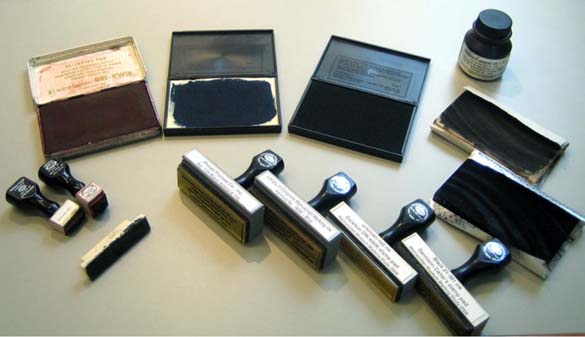
Fig.4. Rubber stamps, ink, ink pads used for the test.
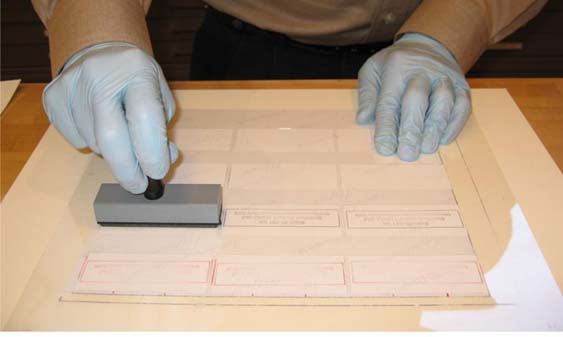
Fig.5. Applying stamps through a polyester template onto the samples lying face-down on matboard.
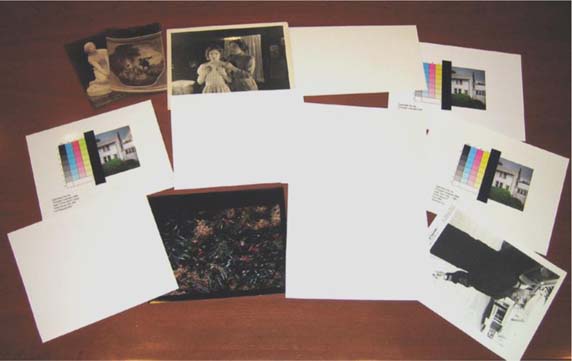
Fig.6. The recto images of the selected fourteen samples.
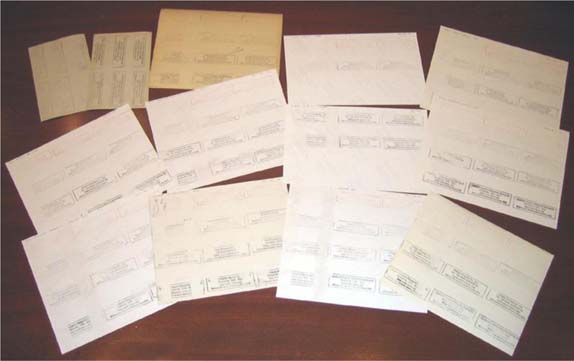
Fig.7. The verso images with stamp marks on the selected fourteen samples.
Multiple samples allowed for testing for differences after the ink stamps were allowed to cure for different lengths of time. After intervals of one week, four weeks, and thirteen weeks, the samples were subjected various treatment protocols (see Chart 2). One series of treatments was designed to test solubility of the inks, should aqueous or solvent treatment be required at a future time. The eraser and sandpaper treatments were a continuation of the removability study conducted earlier to determine the effectiveness of stamps as a security mark. Wet treatments included individual applications of deionized water, ethanol, or acetone applied by swab in one discreet sample area and by droplet in another to determine solubility parameters as well as the amount of ink reduction (see figures 8 and 9). Droplets were applied by micropipette in the amount of five microlitres (see figure 10). Dry treatments included the use of Staedtler Mars Plastic(r) vinyl eraser alone (see figure 11), and the same eraser treatment followed with mild abrasion using fine sandpaper (150 to 400 grit) (see figure 12). A portion of each stamped impression was left untreated as a control for later comparison with treated areas. In spite of efforts to standardize all treatment techniques, there was an unavoidable impact due to individual styles in the application of each test and subjectivity in its evaluation.
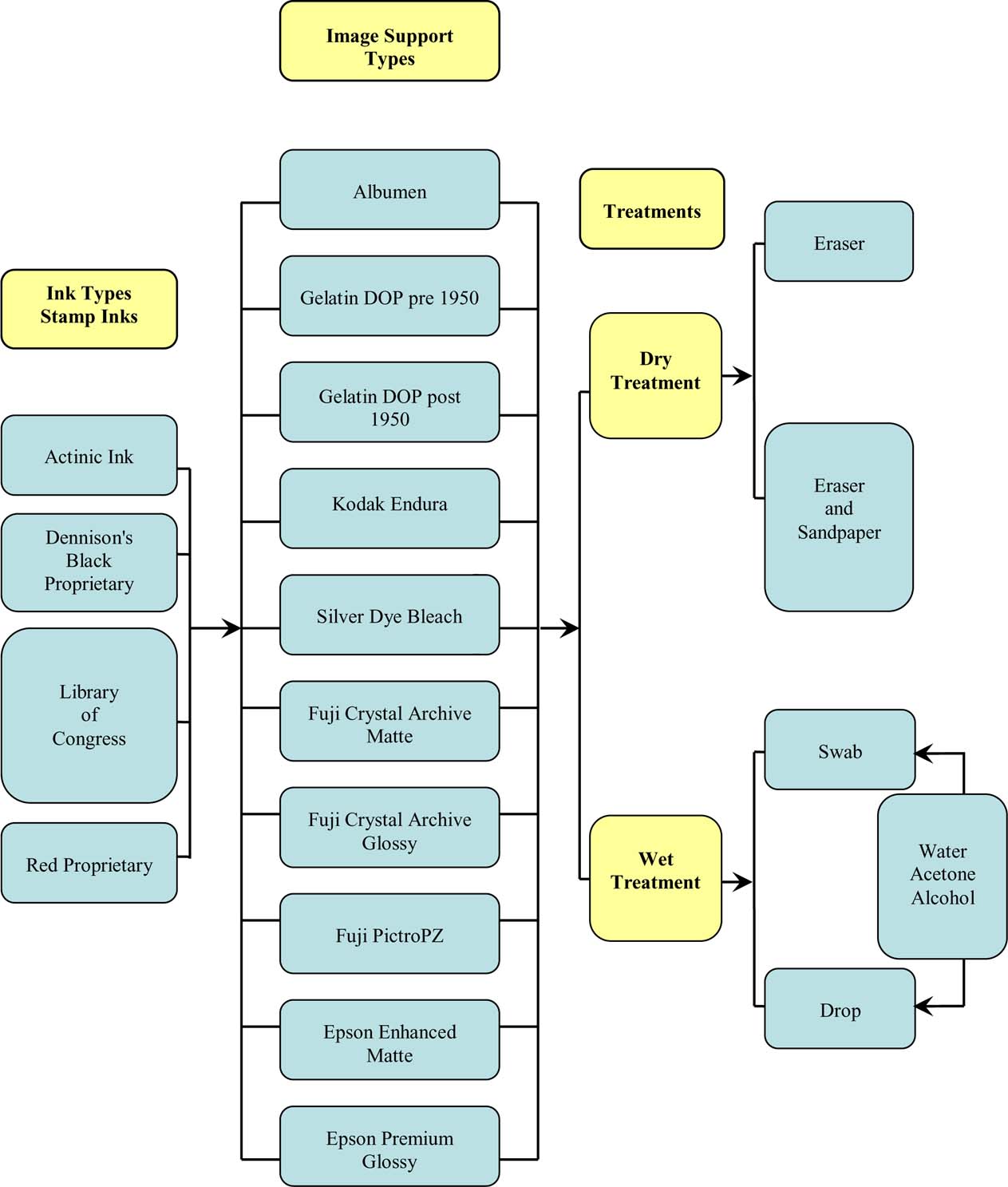
Chart 2. Treatment Procedure
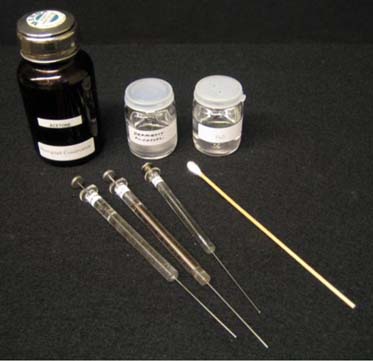
Fig.8. Tools and solvents used for wet treatments.

Fig.9. Applying solvent with a cotton swab.

Fig.10. Applying solvent by micropipette.
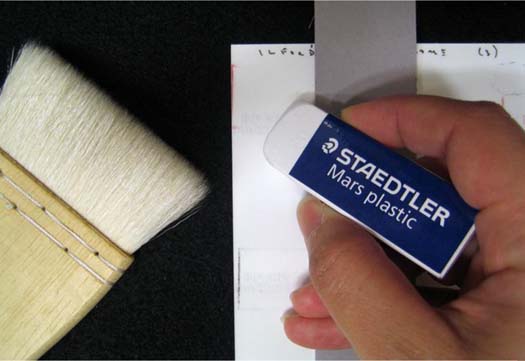
Fig.11. Dry treatments utilized Staedtler Mars Plastic® vinyl eraser.
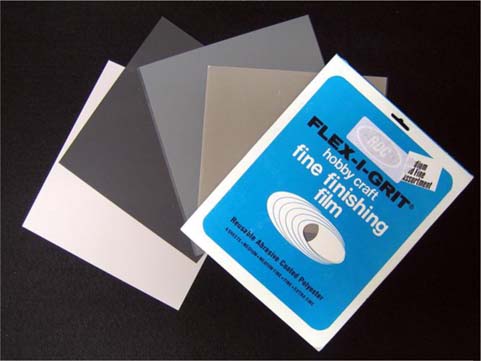
Fig.12. Dry treatments included eraser treatment followed with mild abrasion using fine 150 to 400 grit sandpaper.
Evaluations were made via visual examination under normal and uv illumination by the author's ratings and then through a joint discussion of the results. The results of each treatment were given a numerical rating of 0–4. Zero indicated no change, and four meant complete removal in the cases of the dry treatments and the swab applied wet treatments. Notes included observations on pilling of the surface, disrupted fibers, smearing or entrenched ink, increased or altered surface gloss, tidelines, changes in optical brightener characteristics, and so on. It should be noted that each piece was first evaluated by the practitioner carrying out the test. We then met as a group to re-evaluate and to make relative judgments, comparing results on different sample groups, sharing and discussing observations. Finally, results were tallied and charts created based on ink type, process type and so on. These results are complex, showing few clear trends and are thus generalized as possible within this text. Although we strove for uniformity, the evaluations were necessarily subjective.
With the exception of the Epson Enhanced Matte paper, the supports on which the stamps are most permanent overall are the traditional photographic papers that we tested- that is the albumen, and gelatin developed-out papers. In general, with traditional paper supports, the eraser and the eraser/sandpaper treatments were more successful than solvent treatments in completely removing the inks. The marks made on Epson Enhanced Matte paper were judged to be the most permanent, because this material is so easily damaged, even by erasers, that is was almost impossible to reduce the stamps without causing an unacceptable level of change to the support.
In order of increasing resistance to reduction the remaining papers can be ranked as follows: Fuji Crystal Archive Glossy, Epson Premium Glossy, Fuji Crystal Archive Matte, Kodak Endura, Ilford Cibachrome, Fuji Pictro. Ilford Cibachrome and Fuji Pictro were the only plastic supports from which it was sometimes possible to completely remove ink stamps using solvents or erasers and/or mechanical action.
While the degree of reduction is of course linked to support types, overall the inks are arranged from hardest to reduce to easiest to reduce: Phillips Actinic, Library of Congress, Dennison's Black Proprietary, Red Proprietary ink.
This ink was the most difficult to reduce from the sample supports. Liquid and dry reduction averages present similar results with reduction levels changing from moderate to minimal/moderate over time. Wet and solvent-based methods were slightly more effective in reducing ink marks than were the mechanical means. The degree of reduction seems tightly linked to support types. For example, the fiber-based samples showed no, or minimal, reduction of ink after being treated. Solvent drop tests showed changes only on the resin-coated supports. Acetone seemed most effective for reduction in general, however, many of the examples treated with acetone displayed an increase or change in surface gloss. Interestingly, a number of samples showed a slight amount of increased reduction of ink over time compared to first reduction attempts.
Reduction results again varied by support, but most results indicated that the ink remains the same or becomes somewhat more difficult to remove over time. Observations that the ink had smeared or bled were more common after four and thirteen weeks than in the initial treatment after one week. It is believed that the ink smearing is related to a component that sinks deep into the support and becomes permanently entrenched. Solvent drop tests produced tide lines with all solvents tested. This may indicate that the ink contains different components with varying sensitivities to each solvent. The Epson Premium Glossy sample showed iridescence when treated with alcohol or acetone.
While the Dennison ink became less readily removable over time, moderate reduction was still possible after three months. Averaged results from the drop test with all solvents suggest little change between one and four weeks, but that the ink becomes less soluble within three months. Acetone, and to a lesser extent water, produced bleeding or blurring of the ink mark suggesting that some ink components remain soluble in these solvents, even over time. Mechanical reduction using erasers and/or sandpaper were effective in reducing the ink, but supports often exhibited a change in surface characteristics including abrasion or increased gloss. Fuji Pictro and Epson Premium Glossy showed iridescence in the two samples treated with alcohol.
This was the most readily reduced ink of those tested. The ink became somewhat more difficult to reduce mechanically after one month, but showed no changes in response after that point. Solvent drop test averages suggest that the ink became less soluble after one month and again less soluble after three months. The ink appears to be soluble in acetone, water, and to a lesser extent in alcohol. The Epson Premium Glossy support showed iridescence in one location where alcohol had been applied. Many of the resin-coated papers showed some increase in surface gloss in worked areas
We had generally expected that the inks would be harder to remove as time progressed. This proved to be true in both wet and dry treatments overall, with the exception of treatments involving acetone. In wet treatment of gelatin developed-out post 1950 and both wet and dry treatments of Epson Enhanced Matte samples showed no change in removeability over time. Epson Premium Glossy, Fuji Crystal Archive Glossy, and Fuji Crystal Archive Matte samples revealed a random pattern of reduction potential over time in both dry and wet treatments. Surprisingly, the ink on some samples was easier to reduce over time. This was especially observed in wet treatments of albumen prints, and both in wet and dry treatments of Kodak Endura. A reduced level of reduction after longer drying time was more typical for Dennison's Black ink and the Library of Congress ink. Red Proprietary ink and Actinic ink showed no change in reaction rate versus drying time. We also found that the success of the eraser treatment seemed to be most dependent on time; that is, eraser treatment was most successful when it was applied to a fresh sample.
Reduction using dry methods is most successful on plastic supports, although in some cases the erasers cause unacceptable smearing and changes to the surface. It was possible to completely remove with dry treatment some inks from Ilford Cibachrome (see figures 13 and 14) and Fuji Pictro supports.
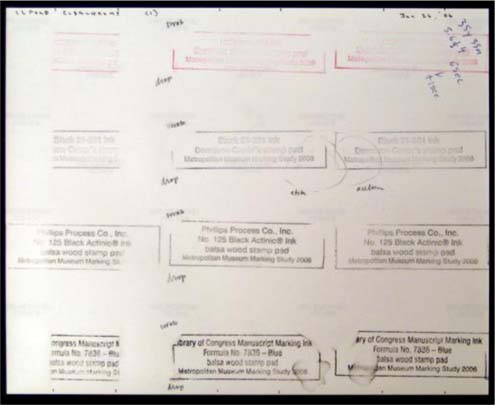
Fig.13. Ilford Cibachrome after treatment. Treated areas are on left and right of stamps.

Fig.14. Detail of Fig.13 with treated areas outlined and labeled.
It was occasionally possible to reduce the ink almost completely from developed-out papers, although the treatment did result in subtle change to the surface that was difficult to discern. Presumably this is because abrasion mechanically displaces paper fibers and with them the ink itself. The fiber-based papers seem to respond better to the sensitive use of dry treatments methods than do plastic supports, whose surfaces may be visibly altered.
Wet treatments were not very successful on paper-based materials. Predictably, water caused inks to bleed, smear, and blur on the traditional albumen and gelatin black-and-white prints. Minor reduction of the ink was sometimes possible, but manipulation of the surface generally caused unacceptable change. The red and black proprietary inks proved to be soluble in water, thus having implications for aqueous treatments. The Library of Congress and Actinic inks were initially affected by water, but became less so over time. The Actinic ink appeared over time to become completely insoluble in water.
No appreciable ink reduction was noted on Epson Premium Glossy, and only minor reduction was observed with swab application on Epson Enhanced Matte. Moderate ink reduction occurred on samples bearing Library of Congress ink impressions. When mechanical action was employed in swab applications, water was effective in reducing most or all ink from Fuji Pictro and Ilford Cibachrome supports. To some extent, wet treatments were moderately successful on certain combinations of inks and support, but complete removal was possible only on Fuji Pictro and Ilford Cibachrome papers, and only with some inks.
The effects and results of solvent testing varied widely depending on the type of support, drying time, and the type of ink, causing some inks to be more or less readily reduced and some paper supports to undergo physical changes. Given these varying results, only gross, general statements can be made about the effects of the different solvents.
Slight changes and ink reduction was observed on samples created with fiber-based supports (albumen and gelatin developed-out prints) with acetone application. The inks were slightly less readily reduced over time. Inks were often observed to bleed, become blurred, or create tide lines. Digital print supports treated with acetone also showed a variety of results. Minor bleeding and staining was observed on most supports and an increase in gloss was also noted on most of the supports including Fuji Crystal Archive Glossy and Matte, Fuji Pictro, and Kodak Endura. Epson Premium Glossy was observed to become slightly more matte and in one instance became iridescent where the solvent had been applied.
On thin albumen paper supports the inks were slightly reduced using reagent alcohol. Gelatin Developed-out samples showed some inks being slightly reduced with associated blurring and bleeding, though a similar number were not impacted by either swab or droplet applications of this solvent. In several instances the process of swabbing with alcohol resulted in a disruption of fibers on the surface of the supports.
Digital supports again showed various responses to alcohol. Inks on Fuji Crystal Archive Glossy and Epson Enhanced Matte samples were only minimally reduced with swabs and alcohol. Moderate or greater reduction occurred on Fuji Pictro, Ilford Cibachrome, Kodak Endura, and Epson Premium Glossy. Alcohol droplet application produced iridescence on the Epson Premium Glossy papers, smudged the Library of Congress ink on Fuji Crystal Archive, and smeared some inks on Fuji Pictro, Fuji Crystal Archive Glossy, Ilford Cibachrome, Kodak Endura. On Epson Enhanced Matte supports alcohol application on the verso caused minor staining on the recto of the photograph sample.
Perhaps the most interesting aspect of this project was the effect of the treatments on optical brightening agents or obas. There has been much published recently about optical brighteners, (Mustalish 2000; Messier, Baas, et al 2005; Wetzel 2005) suffice it to say here that optical brighteners are fluorescent whitening agents that are added to photographic papers, in order to make them appear brighter. Optical brighteners were visible on the recto of many of the papers, in both recto and verso, and surprisingly, sometimes on the verso alone. In our sample group, the oba's were even more revalent on the verso than the recto (see figures 15 and 16).
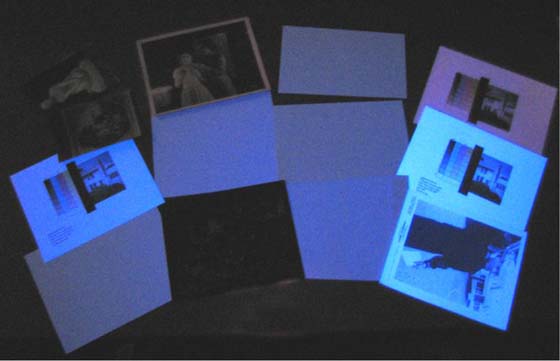
Fig.15. The rectos of the selected fourteen samples under uv long wave illumination.
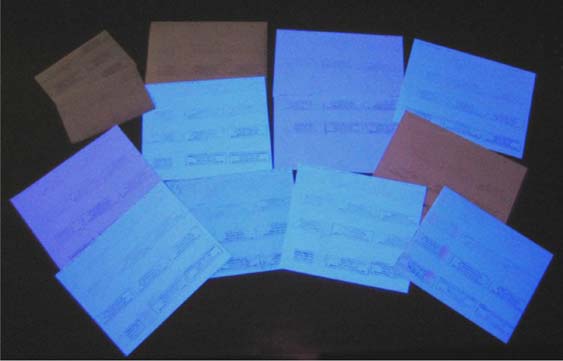
Fig.16. The versos of the selected fourteen samples under uv long wave illumination.
Under UV illumination we saw that the use of even small amounts of solvent can cause disfiguring and immediate changes that can bleed through to the recto to appear as stains and tide lines (see figure 17). Treatment that did not seem to cause disfiguring change in normal illumination was found to have caused changes or damage that was clearly visible under uv illumination. On the Epson Premium Glossy paper only, we noticed the appearance of a ghost image of the stamp after the ink was removed, which made us wonder if perhaps the very application of the inks themselves causes damage to the underlying support (see figure 18).
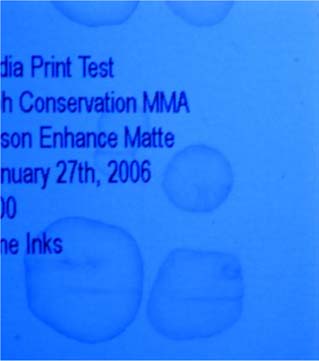
Fig.17. Epson Enhanced Matte paper after treatment. Stains and tide lines under uv short wave illumination on the recto surface.
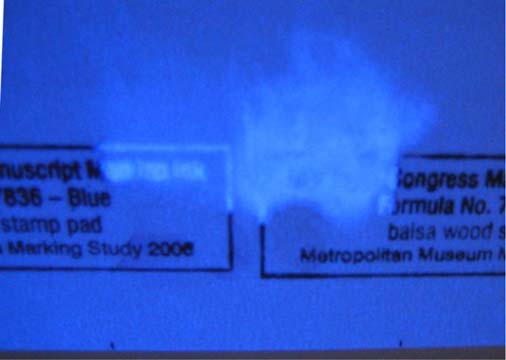
Fig.18. Epson Premium Glossy paper after treatment. Close-up of the ghost image of the stamp under uv short wave illumination.
At this point the preliminary nature of this study should be reiterated. Recommendations for future studies would include using a larger number of samples for each protocol to validate our preliminary findings. Further evaluations should also utilize more standardized methods for treatment and a more precise protocol for evaluation. Also, given the number of questions we field on this topic, research into pens for marking and signing photographs on both recto and verso by photographers is clearly an area of interest useful to both conservators and photographers. Here the goal of permanence and light-fastness would be paramount over removability. Treatment concerns would also play a role.
The authors wish to acknowledge the collaboration and assistance of the following colleagues at The Metropolitan Museum of Art: Silvia Centeno, Department of Scientific Research; Douglas Eklund, Malcolm Daniel, and Jeff Rosenheim of the Department of Photographs; Rachel Mustalish, Paper Conservation Department. Thanks also to James Welling, Barbara Bridgers, Richard Stenman, Michael Shuter, and the Photograph Conservation Study Collection for donations of prints to test. All imaging is by Hanako Murata.
Maberly, J. 1880. The Print Collector. New York: Dodd, Mead & Company.
Messier, Paul, Valerie Baas, Diane Tafilowski, Lauren Varga. 2005. “Optical Brightening Agents in Photographic Paper”. JAIC 4: 1–12.
Mustalish, R. A. 2000. “Optical Brighteners: History and Technology”. Tradition and Innovation: Advances in Conservation. Postprint of Melbourne Congress. Melbourne Australia: International Institute for Conservation of Historic and Artistic Works. 13–36.
Wetzel, Rachel K. 2005. “Optical Brighteners - A Study of Water Solubility” Topics in Photographic Preservation, Vol. 11. Compiled by Brenda Bernier. Washington: American Institute for Conservation, Photographic Materials Group. 73–78.
Papers presented in Topics in Photographic Preservation, Volume Twelve have not undergone a formal process of peer review.